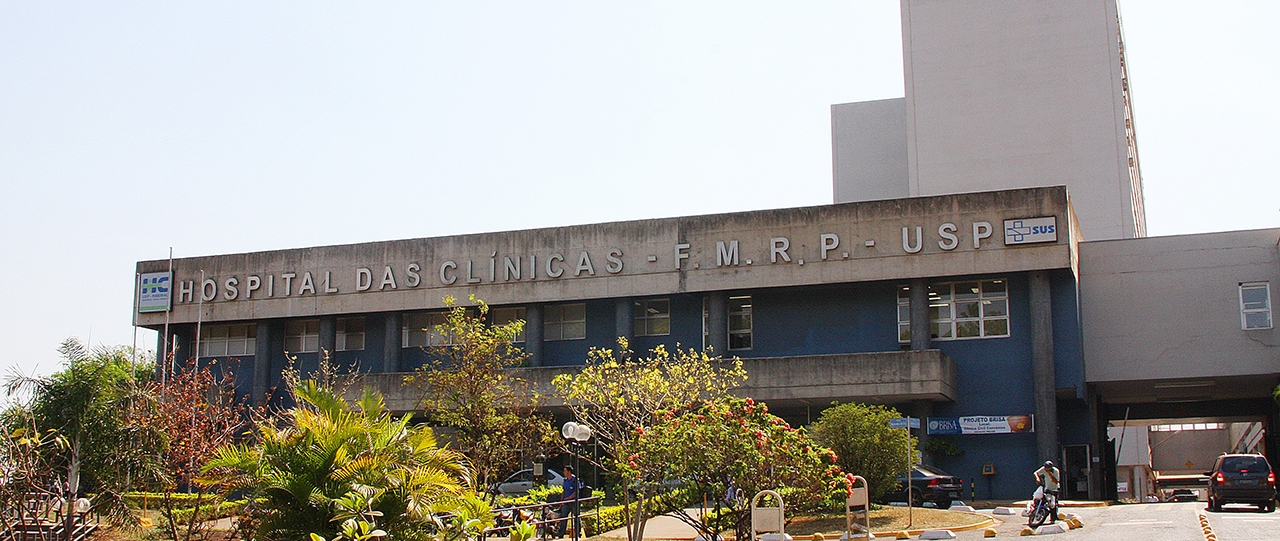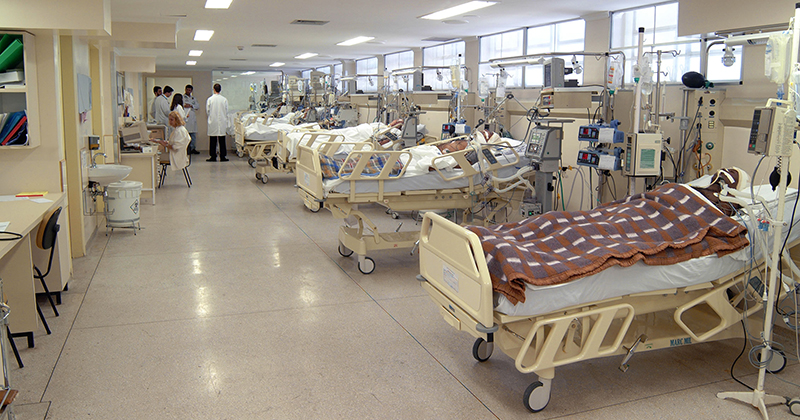A study conducted at the Hospital das Clínicas of Faculdade de Medicina de Ribeirão Preto (HCFMRP, University Hospital of the Ribeirão Preto Medical School), USP, mapped the communities of microorganisms that inhabit the intensive care units (ICU) of the institution. The study authors observed differences in the microbiota composition of the ICU surfaces and, also, that many potentially disease-causing bacteria living in these locations are resistant to cleaning products used to minimize the risk of hospital-acquired infections. The results were published on August 28, in an article in the specialized journal Frontiers in Public Health.

According to data from the Centers for Disease Control and Prevention (CDC) in the United States, hospital-acquired infections kill about 72,000 people per year and generate estimated costs of US$ 97 to 147 billion. In Brazil, 2014 data referring to ICU from 1,692 hospitals indicated the incidence of five primary laboratory bloodstream infections every 1,000 central venous catheters per day in an adult ICU. This type of infection is one of the most common hospital-acquired infections. This information is in the document that shows the objectives of the Brazilian Program for prevention and control Health Care-Related Infections (2016-2020). The document was published by the Brazilian Health Regulatory Agency (ANVISA).
The study in São Paulo inland was made with a partnership of the Hospital-acquired Infection Control Commission of the HCFMRP with researchers from Faculdade de Filosofia, Ciências e Letras de Ribeirão Preto (FFCLRP – School of Philosophy, Sciences and Letters of Ribeirão Preto), USP. The mapping used new generation sequencing techniques, which are techniques that enable to identify a quantity of genera and species of microorganisms much higher than the cultivation in the laboratory.
“As we do not need to cultivate previously, we are able to extract DNA from cultivable and non-cultivable microorganisms. The non-cultivable microorganisms require some conditions that we are not able to imitate in the laboratory. They are usually the most extremophiles microorganisms, that is, they live in the most extreme environments”, microbiologist María Eugenia Guazzaroni (professor at FFCLRP and one of the authors of the study) says. She explains that, currently, about 97% of the bacteria of any type of sample are not cultivable.
The study aimed to evaluate the concurrent cleaning quality of the adult and neonatal ICU in the hospital. Concurrent cleaning is a protocol that determines that nursing professionals should clean the ICU beds daily, even during the hospitalization of patients. The nurse cleans the entire area around the patient, including mattress, infusion pumps and respirator to decrease the concentration of microorganisms in the environment and prevent transmissions from one patient to another.

Diversity study
To map the microorganism communities, it was necessary to collect samples on the surfaces where the concurrent cleaning should be performed. The collection was conducted on days of normal operation, without the nursing teams being previously warned that any inspection would occur. The idea was that, without the warning, it would be possible to obtain a more reliable context of the microbiota that inhabits the ICU in everyday life. A researcher at FFCLRP was responsible for extracting samples from the surfaces of mattresses, beds, doorknobs, respirators and other equipment. He also collected samples from the surfaces of computers, cellphones, and folders of medical records that were on site. The collections were made before and shortly after the concurrent cleaning.
In the laboratory, the researchers used the sequencing of the new generation to isolate the DNA of all the microorganisms present in the samples. From these data, they opted to conduct a diversity study, which uses a genetic marker to identify the phylogenetic classification of the microorganisms present in the sample. In this case, they used the 16S ribosomal RNA gene—a very well-preserved gene because it is related to an essential organelle for the survival of bacteria.

List of identified microorganisms includes common inhabitants of hospitals, such as the bacteria of the genera Klebsiella, Pseudomonas, Staphylococcus, Enterococcus, Acinetobacter e Escherichia. However, their distribution ranged from one surface to another. Comparing data from different samples, researchers found that bacterial biodiversity is higher in the neonatal ICU than in the adult ICU, which may be related with the greater number of people circulating at the site. And on the surfaces close to patients, the microbiota gained a particular “fingerprint” when compared to workstation surfaces.
The research warns of the fact that the use of antibiotic medications is not the only factor influencing the appearance of multidrug-resistant bacteria. “The most interesting fact was to see that the concurrent cleaning reduced the number of microorganisms, but many of the most worrying genera, which are potentially pathogenic, did not change. Even if the nurses knowingly performed concurrent cleaning, they used the same chemical product every day, thus, these pathogenic bacteria were already adapted and resilient to this product. It was the same as not using anything”, says Eugenia Guazzaroni.
In addition to the frequency of resistant to cleaning materials bacteria, the faculty member of FFCLRP has drawn attention to the fact that several samples extracted from cell phones show similar characteristics to ICU. “Cell phones imitated the microbiota of their own environment, you know? Which means that the nurse is underestimating the bacteria that are inhabitants of that place”, says the microbiologist.
According to Mayra Menegueti, professor at the Ribeirão Preto Nursing School and a member of the Hospital-acquired Infection Control Committee of the HCFMRP, the results of the study do not determine whether the amount of resistant to concurrent cleaning bacteria is sufficient to transmit disease. “We still want to conduct other studies to estimate what would be the minimum bacterial load that would be in contact with the professional’s hand and could spread to other patients”, the professor (who is also co-author of the article published in the Frontiers in Public Health) says.
The research had the financial support of FAPESP.
More information: (16) 3315-3695, or e-mail meguazzaroni@ffclrp.usp.br with María Eugenia Guazzaroni
By Silvana Salles – jornal.usp.br
